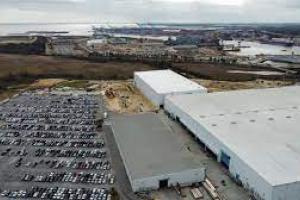
South Korean shipbuilders are experiencing a severe labor shortage as the industry begins to rebound after a prolonged period of stagnation. The shipbuilders are expected to build a significantly greater number of ships starting in the second half of this year, but skilled subcontract employees have yet to return to the industry following a large-scale restructuring in the mid-2010s, according to government estimates.
According to industry statistics, the number of subcontract workers decreased from 133,346 to 51,854 between December 2015 and February this year. It is estimated that the shortage will reach at least 9,500 workers in September, according to the Korea Offshore and Shipbuilding Association. Because of the high intensity of labor and a wage that is comparable to the general manufacturing sector, this is mostly the case.
The cash flows of shipbuilders are among the other factors. That group of enterprises has been operating in the red for several years, and a number of new shipbuilding procedures have not yet gotten underway. Furthermore, the majority of their contracts are long-term, and the price of thick plates has skyrocketed in recent years. In short, they are unable to pay more compensation to subcontractors.
As a possible alternative, the corporations have suggested that employees be excluded from working 52 hours each week. According to the Korea Labor Institute, however, this is not a viable answer, and what is really needed is a work environment that is appealing to young people in general. According to industry sources, shipbuilders will be required to pay higher wages to subcontractors in the long run, and they will be required to promise that the mass layoffs would not occur again.
According to industry statistics, the number of subcontract workers decreased from 133,346 to 51,854 between December 2015 and February this year. It is estimated that the shortage will reach at least 9,500 workers in September, according to the Korea Offshore and Shipbuilding Association. Because of the high intensity of labor and a wage that is comparable to the general manufacturing sector, this is mostly the case.
The cash flows of shipbuilders are among the other factors. That group of enterprises has been operating in the red for several years, and a number of new shipbuilding procedures have not yet gotten underway. Furthermore, the majority of their contracts are long-term, and the price of thick plates has skyrocketed in recent years. In short, they are unable to pay more compensation to subcontractors.
As a possible alternative, the corporations have suggested that employees be excluded from working 52 hours each week. According to the Korea Labor Institute, however, this is not a viable answer, and what is really needed is a work environment that is appealing to young people in general. According to industry sources, shipbuilders will be required to pay higher wages to subcontractors in the long run, and they will be required to promise that the mass layoffs would not occur again.
News Category




























